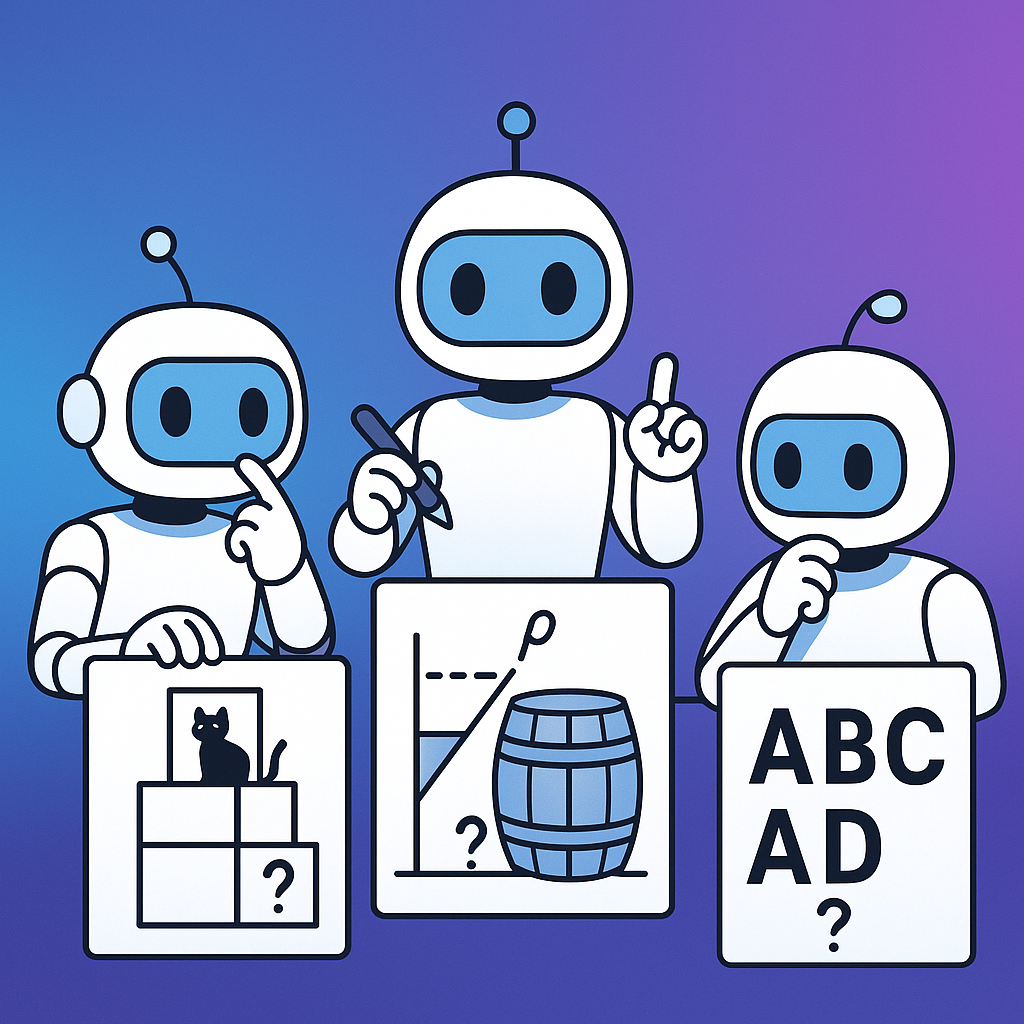Logic Face-Off: Testing ChatGPT 4.1, o3, and 4o Against Classic Puzzles
A hands-on comparison of how ChatGPT's latest models tackle puzzles, riddles, and logical challenges, revealing surprising similarities despite their technical differences.

OpenAI quietly slipped GPT-4.1 into the ChatGPT family without much fanfare recently. Despite the low-key launch, this upgrade packs some serious improvements in logical reasoning and coding abilities. With a massive context window and better structured thinking, it's opening doors for developers and puzzle enthusiasts alike. But I wondered - does it really outshine its ChatGPT siblings when tackling logic problems beyond pure code?
The Setup: A Three-Way Logic Contest
Instead of running boring benchmark tests, I decided to throw something more fun at these AI models: good old-fashioned riddles and brain teasers. My makeshift "Logic Olympics" featured three contestants:
- GPT-4.1: The new kid on the block, with enhanced reasoning skills
- GPT-4o: The everyday default that's available to all ChatGPT users
- o3: The specialized math and logic wizard in OpenAI's lineup
Puzzle #1: Catching a Sneaky Cat
First up was a classic deduction problem: Imagine five boxes in a row numbered 1-5. A cat hides in one box, and each night jumps to a neighboring box. Every morning, you get one chance to open a box and look for it. How can you be sure to find the cat eventually?
GPT-4.1 tackled this like a seasoned detective. It laid out a step-by-step search pattern that systematically narrows down possibilities. I watched as it walked through the cat's potential movements, showing exactly how certainty emerges from the chaos of possibilities.
The o3 model took its time – about 22 seconds of thinking before responding. Its explanation was wordier but reached the identical strategy as 4.1, confirming you'd catch the cat within five days maximum.
GPT-4o kept things remarkably simple. It briefly explained the "chasing strategy" concept without diving into all the mechanics underneath – just enough to solve the puzzle without overcomplicating things.
Puzzle #2: The Half-Full Wine Barrel
Next came a puzzle about practical physics: A lidless barrel contains some wine. One person insists it's more than half full, while another claims it's less. Without measuring tools or removing any wine, how can they settle their argument?
GPT-4.1 served up a beautifully simple solution: just tilt the barrel until wine reaches the edge. If you can still see the barrel's bottom, it's less than half full; if not, it's more than half full. The model explained both the how and why in clear, concise paragraphs.
The o3 model was surprisingly blunt – a couple of bullet points and it was done. There was almost an impatient tone to its conclusion: "No rulers, no siphons – just a slow tilt tells you who's right." Efficient, if a bit abrupt.
GPT-4o split the difference – starting with bullet-point instructions but then diving into a fascinating explanation of the physics principles that make the solution work.
Puzzle #3: A Riddle of Letters
The final challenge was a classic wordplay riddle: What occurs once in a minute, twice in a moment, and never in a thousand years?
GPT-4.1 spotted the pattern immediately: the letter 'M' appears once in "minute," twice in "moment," and zero times in "thousand years." Three clear bullet points explained the pattern perfectly.
The o3 model matched the three-bullet approach but kept it extremely minimal – stating only the letter counts without elaboration, like a mathematician giving just the final answer.
GPT-4o's bullets were brief but added a friendly insight: "The trick is in interpretation – thinking literally (letters), not figuratively (time)." It's as if it wanted to help you learn how to solve similar riddles in the future.
The Bottom Line: Surprisingly Similar
After spending way too much time watching AI models solve puzzles about cats, wine, and the alphabet, I've reached some conclusions. All three demonstrate impressive logical abilities, though they definitely have different communication styles.
GPT-4.1 consistently delivers the clearest reasoning with thorough explanations. It's particularly good at walking through each step while keeping things understandable, making it perfect for complex logical problems including (but not limited to) coding challenges.
But here's the surprising part – for everyday puzzles and riddles, the difference between these advanced models is barely noticeable. A casual user probably wouldn't see enough advantage in one over the others to matter. It's a bit paradoxical: despite significant technical differences under the hood, these cutting-edge AI models perform nearly identically on standard reasoning tasks. The most rational conclusion about these reasoning engines? The differences might not matter as much as we'd logically expect.